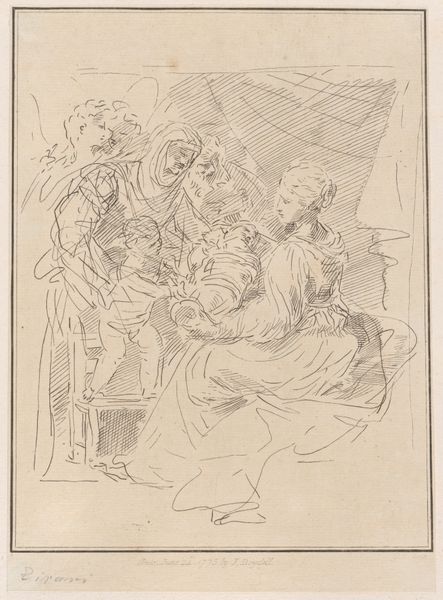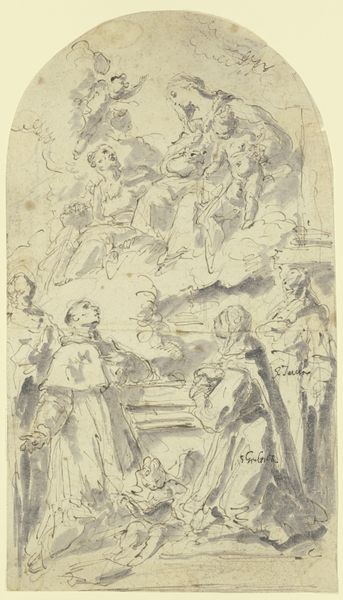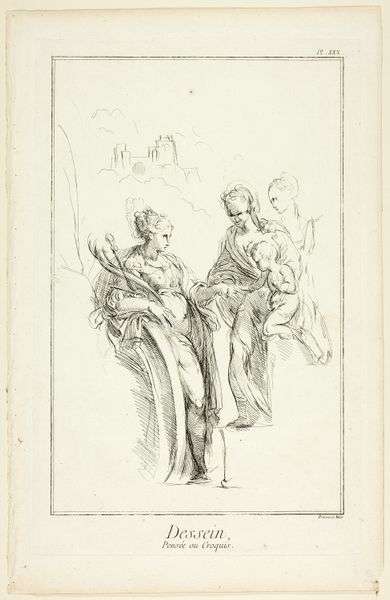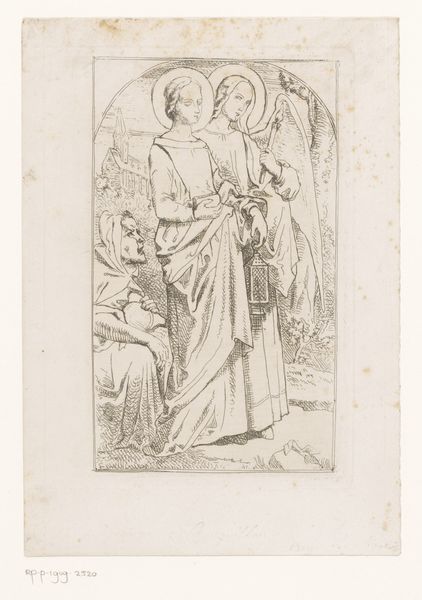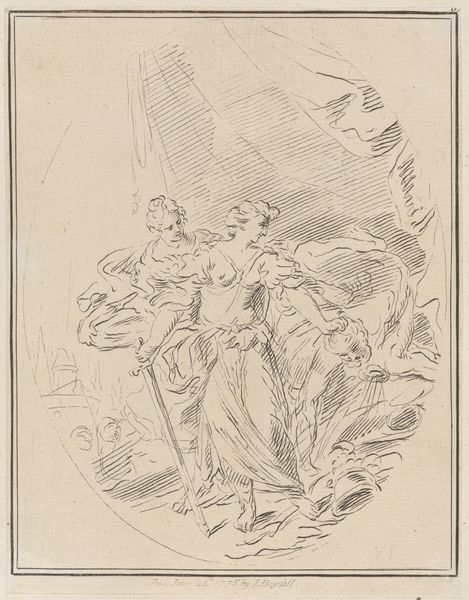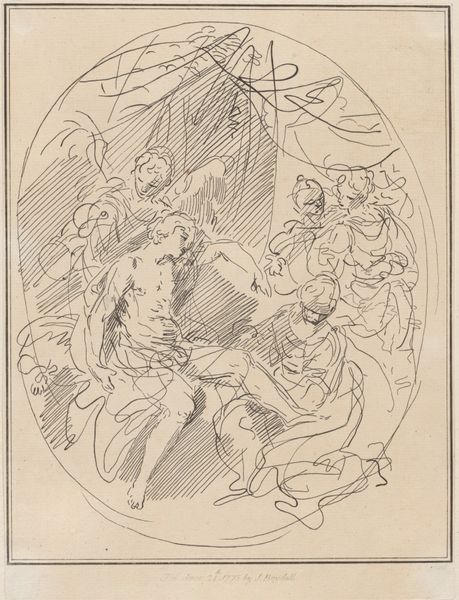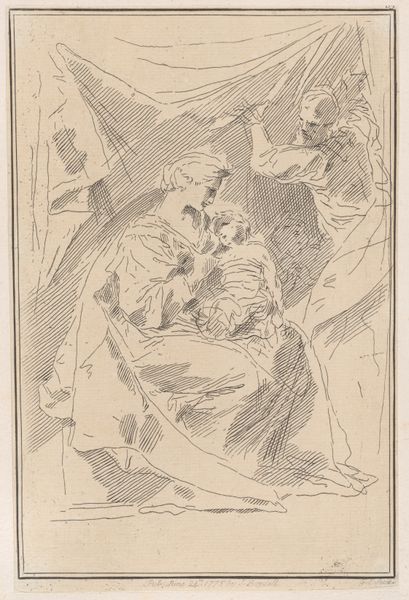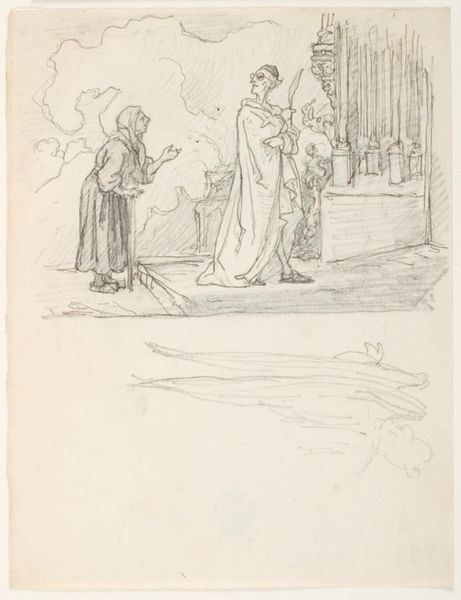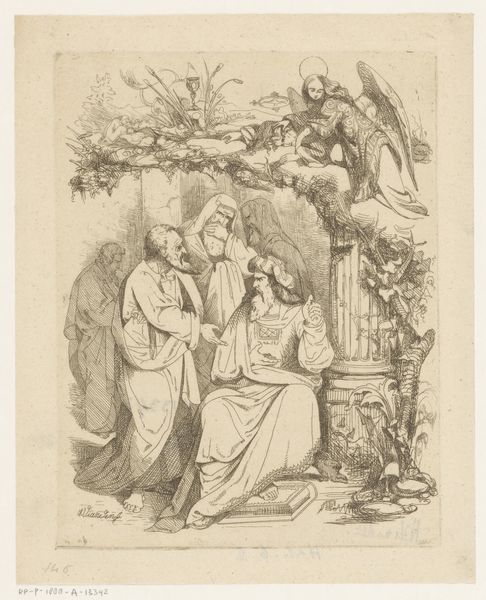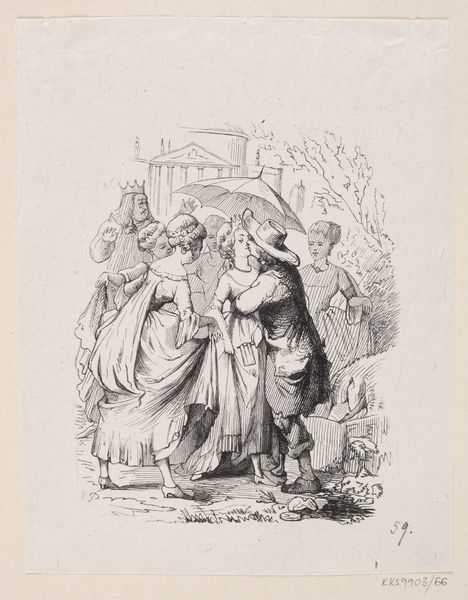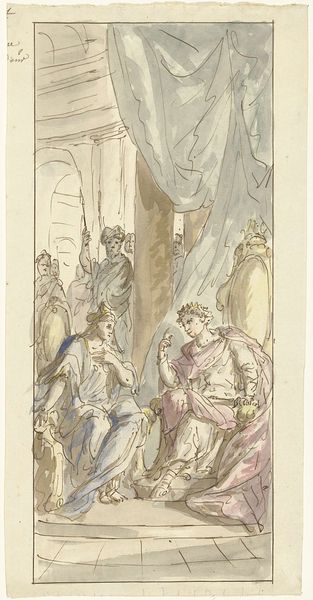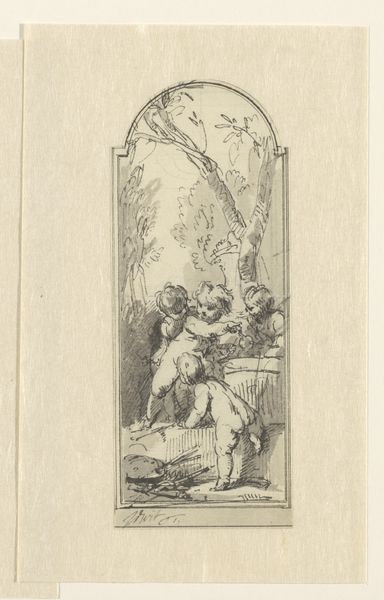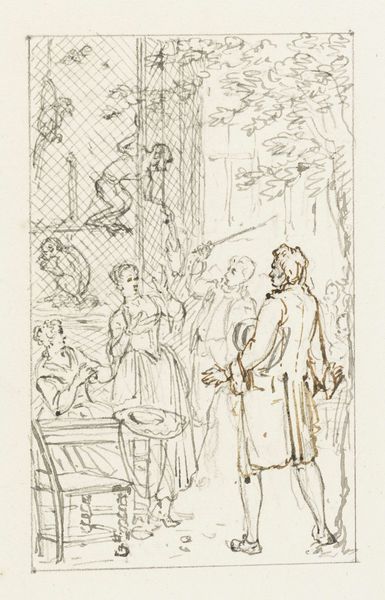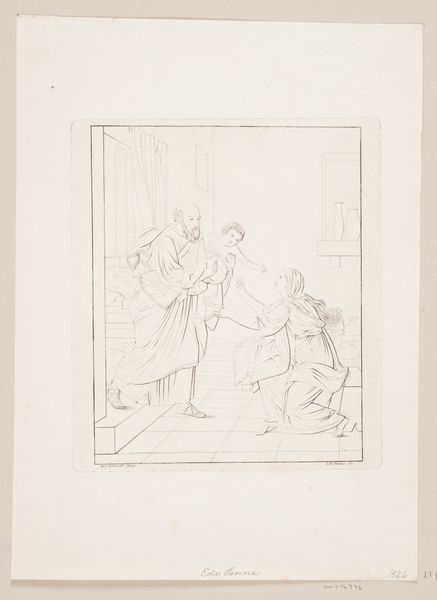
drawing, ink, pen
#
drawing
#
narrative-art
#
baroque
#
etching
#
ink
#
pen-ink sketch
#
pen
#
history-painting
#
academic-art
Dimensions: height 318 mm, width 180 mm
Copyright: Rijks Museum: Open Domain
Curator: A rather intriguing pen and ink drawing, wouldn't you agree? Titled "Het verbond van Romulus en Titus Tatius, koning der Sabijnen," by Elias van Nijmegen, and dating from between 1677 and 1755, it depicts the union of Romulus and Titus Tatius. Editor: Immediately, I'm struck by the sketch's dynamic, almost frantic linework. The ink washes and the swiftness of the marks contribute to a palpable sense of immediacy and heightened activity, like capturing a fleeting moment of utmost importance. Curator: Precisely. Van Nijmegen masterfully employs the Baroque idiom. Note the dynamism conveyed via the pen strokes, and the academic refinement suggested by the precise detailing of drapery and figures; such aspects lend the sketch both vitality and a certain gravity that we see in much history painting from this era. Editor: I am wondering how such depictions serve ideological and political purposes of the time? The formal gesture of hand clasping isn't just an agreement; it's a powerful display of alliance, which can resonate with contemporary power structures or nationalistic ideals of van Nijmegen’s time. Do we see an argument of legitimacy for Dutch leadership within its socio-political environment here, perhaps? Curator: The artist's academic leanings might imply an inclination toward established artistic conventions. But this does not imply simple endorsement of status quo, of course. Semiotically, observe how the classical figure overhead directs our eye. Editor: And, tell me more—beyond the surface narrative—about the figures' placement and treatment of light and shade, which all subtly underline this drawing’s core thesis within historical developments of Academic art? How the balance of light, distributed and contained almost equally in these two figures could signify equality between the sides. Curator: A shrewd analysis. Also, I am drawn to how he depicts divine intervention with a draped semi-nude classical statue. A god overlooks their mutual clasp. Its positioning reinforces a celestial legitimization to these mortals and their union. We can see some tension that could signify sacrifice or duty on the human side, while the gods secure order on the spiritual plain. The alliance then serves as more than political strategy. Editor: Indeed! These ink lines construct the artist's perspective and serve almost as manifestos, making even simple drawings culturally potent. I believe my readings underscore how an artist might, on closer examination, challenge established assumptions or provoke dialogue. Curator: Thank you, this really underlines how much more there is than meets the eye with simple visual reading of any image—context informs both making and observing—which has been the heart of our exchange here today.
Comments
No comments
Be the first to comment and join the conversation on the ultimate creative platform.
